So, that’s it. My second megagame, Everybody Dies Harder, is over and done with.
I don’t think I can really believe it. It seemed too good to be true.
The day passed in a whirl of burnings, stand-offs in the throne room, and religious warfare.
18 players died, four more joined the Night’s Watch.
I’ll leave the write-ups of what actually happened to the players, all of whom did a fantastic job bringing my game to life (scroll to the bottom for a full list of AARs).
Overall I’m absolutely thrilled that the game went so amazingly, ran so smoothly and so many people enjoyed themselves. My Control Team were absolutely fantastic, and my players all excelled themselves.
But, self-critic that I am, I wanted to take some time to look at the game a bit more analytically, and work out what worked, what didn’t work, and what I’d change if they manage to persuade me to run it again.
First up, let’s take a look around the room with my Facebook video:
On to the nitty-gritty…
Religion
Religion was a late addition to the first run, and to be honest it showed. In this run, I’d had a lot more time to put some thought into it.
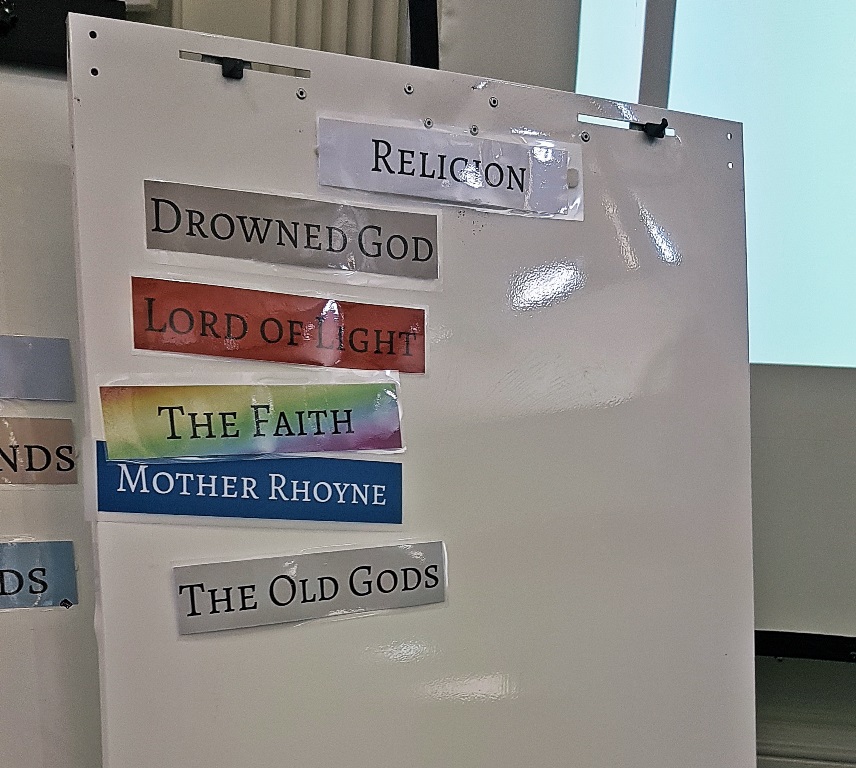
I’d given the Lord of Light team an extra Red Priest character. This was especially useful since one of the players was running late, and who knows how differently the game would have gone without our Red Priestess running riot.
I also upgunned the religious tension in Dorne overall. I added in a brand new religion, Mother Rhoyne, although only one player followed them and they weren’t terribly interested in converting. But, more crucially, I briefed one bannerman, Ormund Yronwood, to be fanatically devoted to the Faith.
…If he hadn’t declared war on one of the Lord of Light converts on turn 2, everything would have gone very differently.
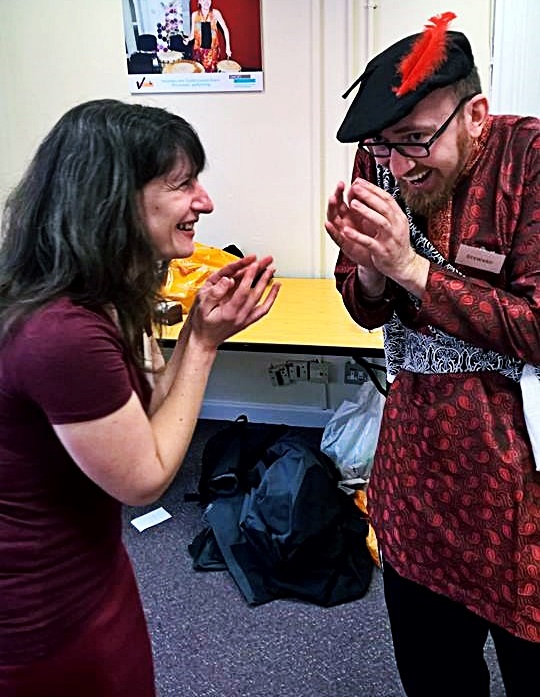
You can just tell they’re followers of the Lord of Light, can’t you!
And finally, I gave the Faith a big twist. They were dedicated to eradicating the Targaryens from the face of Westeros. They had new powers, which depended on their sept level and, at level 7, included the power to kill or bring someone back to life. And they had the ability to raise the Faith Militant.
After they spent all game persuading players to invest in the sept, they put out the call to arms. The troops that responded gave them the largest cavalry on the board, and we actually ran out of cards for them.
And many many players realised they’d fallen into the same trap as Cersei Lannister in the TV show.
Thoughts
Overall I think the religion game was a great addition. The differences of religion across Westeros were one of the driving forces throughout the entire day. I am slightly worried that I made it a little too overpowered. The Faith Militant was supposed to pose a significant threat, and theoretically all of the Lords should have felt threatened that some commoners were stirring up trouble. It was tough to brief players so that the reacted to the Faith Militant in a realistically negative way, considering we didn’t want to hint that they would come up in the game.
In the end, Jaime Lannister even tried to marry the High Septa to get the realm out of this pickle.
Similarly, the fact that most of Dorne and even parts of the Reach converted to the Lord of Light was completely unexpected. The Reach in particular is the home of chivalry, most of which stems from the Faith. Since we hadn’t been expecting conversion on anything like this scale, we had no conversion mechanics in the game. It’s never as simple as the head of a territory converting and their people following quietly – there would have been some serious difficulties (even religious rebellion) in the Reach. Even in Dorne, the Martells would not have been able to convert so easily.
Mother Rhoyne did a great job with his mini-religion though…
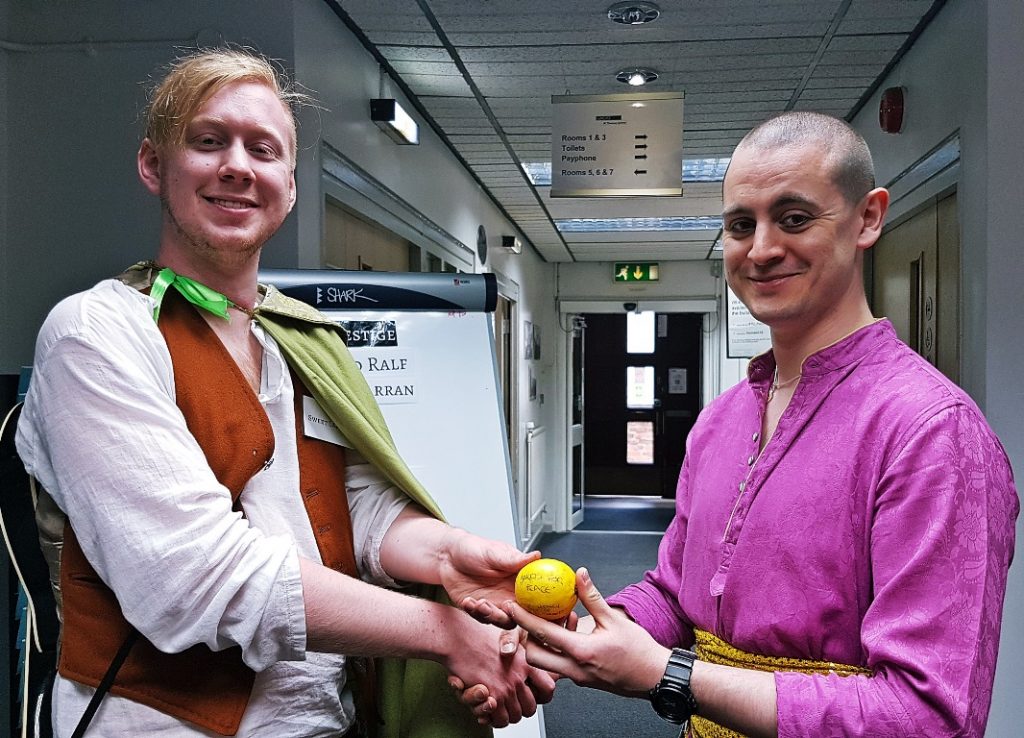
He even put on a barding competition with a lemon for an award!
Family Cards
In the first game, all players had to track their family members on their character sheets. This game, they had individual cards to track them.
Players could write betrothals and marriages on the cards, as well as hand them off to other players for fostering or safe keeping.
At one point Robert reluctantly let Lyanna’s card go, to be escorted to her home in the North. Unfortunately he chose Jon Connington to do the escorting, Rhaegar’s best bro, and she was married to the Targ before you could say “winter is coming”.
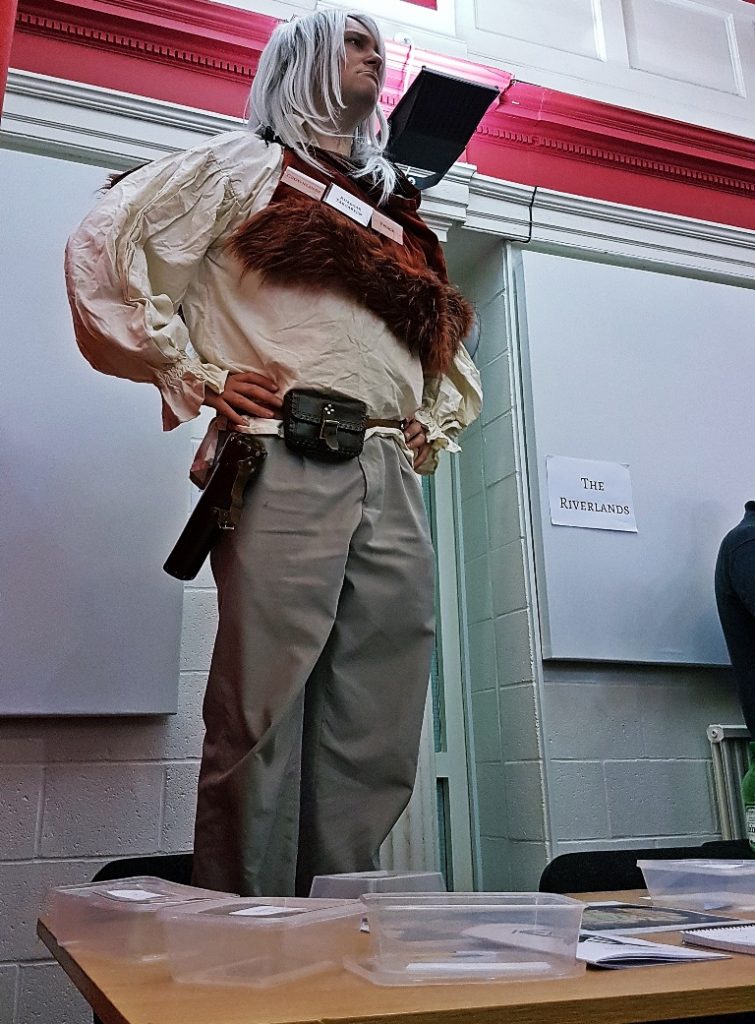
Ours is the fury indeed, eh Robert?
Thoughts
This is probably the best new addition. The cards made it ridiculously easier. Vittoria Dayne’s sister Ashara could be in Dragonstone with the Princess Elia, Robin Greyjoy could be a hostage in King’s Landing.
Unfortuanately, not everyone was terribly thorough with checking the family cards, and two players ended the game betrothed to Cersei Lannister – Elbert Arryn and Stannis Baratheon. Not that I believe that Jaime would ever let her go with either of them…
(And just a note – no where in Rhaegar’s briefing did we try to set him up with Lyanna – that was all emerging game play!)
The Little Bards
Okay, I take it back, this was my favourite new addition.
The Bards were working for Varys.
Spy networks are always hard to use in Megagames. Megagames are just so damn complicated. They’re too much information, I don’t think a single player could physically hear everything during the duration of the game (even including the pub time afterwards).
In the first run, we’d given Varys three “Little Birds” cards to give to Control each turn, with a person or theme he wanted to investigate. At the end of the turn he would collect the cards and the info.
We had feedback that generally he’d heard news from the maesters or the bards or other players in general, and had used the birds to just dig deeper.
We wanted to give Varys more omniscience this game, so what better way than to literally have five players reporting all player movements to him every turn.
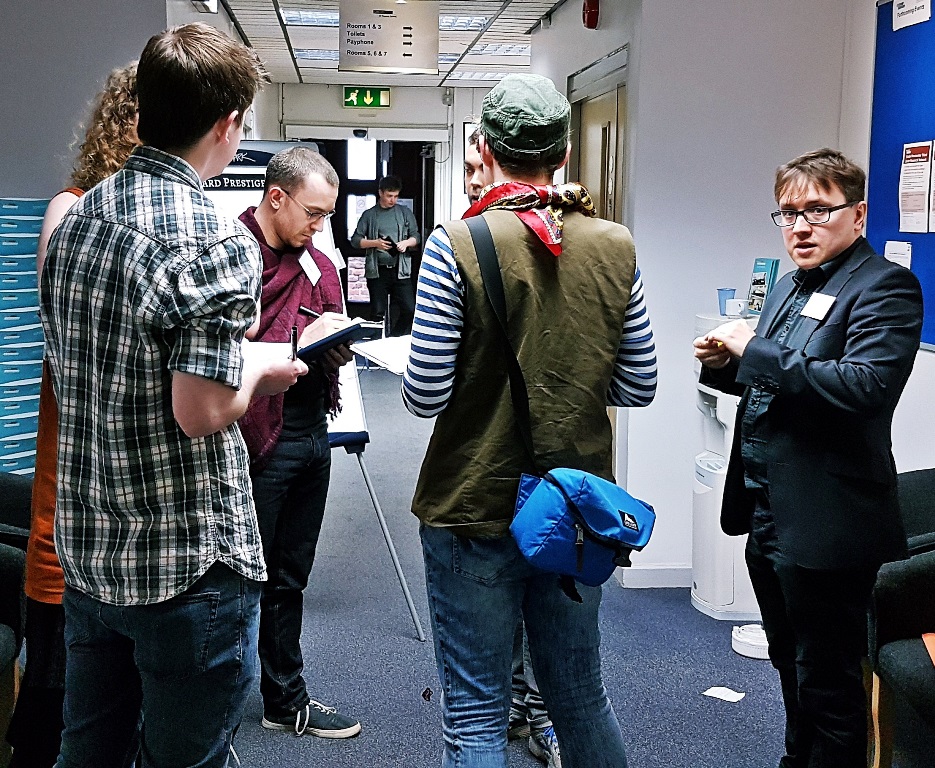
There was even (get this) a SECRET BARD PASSAGE! Varys could leave the Small Council Chamber, meet secretly with the Bards, and then return, with no one (theoretically) noticing.
I mean, the maesters were casually discussing it by turn 4, but let’s not talk about that.
Thoughts
The most epic thing, if only because we could call them the “Little Bards”.
The Maester Conspiracy
Last game the Maesters had the only hidden conspiracy in the game – to take down the Targaryens. We knew we needed to shake up this plot, but the question was how.
This time their “conspiracy” was that they were working for the common good, to create a peaceful and stable realm. They had different ideas of how to go about this – would there need to be a war, because the Lords were riled up? Could Aerys be peacefully deposed? Could they just struggle through?
And often these aims would conflict with what the Lords wanted – generally, as much power and prestige as they could get their hands on.
Add to that, that winter was indeed coming. From turn 5, they needed to impress on the players that they had to make peace and begin stockpiling for the winter.
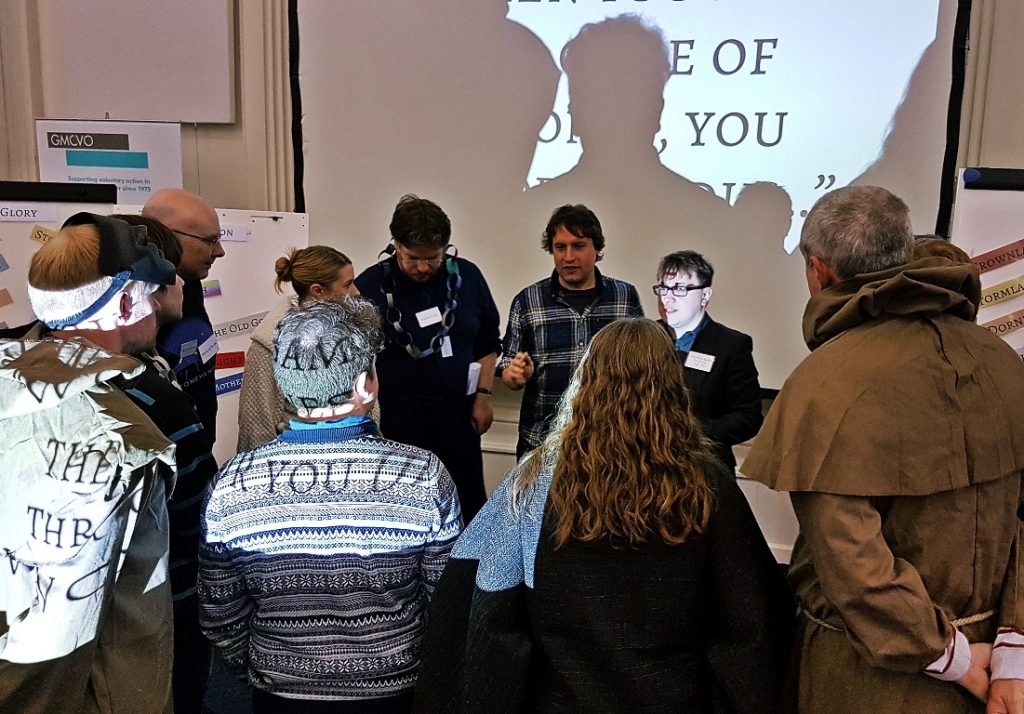
Imprinted with wise words indeed…
Thoughts
With the new plots for the Bards and the Religious players, the Maesters unfortunately got a bit overlooked. In addition, their plot was quite slow-starting, and probably needed a fair bit of Control intervention to give them things to do about it.
The maesters acted a lot more individually than at past games, with a key example being when two different maesters tried to give the King two different types of bad dreams. Despite being able to move freely during the game, an advantage not shared by the Faith players, perhaps I briefed them to have too much infighting. Perhaps we could have encouraged them to communicate pre-game.
Overall I’m not happy that the Maesters had as good a game as they could have. I’ll need to do some thinking on how to make it work for them.
Region Rotation
In the first run, after players died, I nearly always placed them back in the region they’d been playing in before. Sometimes they returned as their heir, sometimes they became a new bannerman.
This game, we moved players around more. The player who died in Dorne was moved to the Stormlands, the Stormlands player moved North, etc.
A few players were also seeded in as “special action players”. We had the King Beyond The Wall, the Lord Commander of the Night’s Watch, and an Iron Banker hellbent on getting their loan back from the throne.
Thoughts
The special action players were fantastic, and I totally want to keep them. But next game I would keep all other players in their regions.
I know some players got a bit fatigued in their regions, and it would be hard for the other players in that team to treat them totally differently even if they were in a new role.
But putting players into a region where they don’t know any of the other players, or any of the basics of the region (such as what actions are acceptable), is just too much of an ask for a lot of players most of the way through a game day.
Extra Bannermen
What with the popularity of the game, I felt a certain amount of pressure after run one to accommodate more players. Because everyone was so damn keen to get a place.
My first run was 79 players. My second was 89. I added in 11 new roles: one new Red Priestess and 10 bannermen, one for each region; and removed one role, Catelyn Tully, who found she had little to do after she got married.
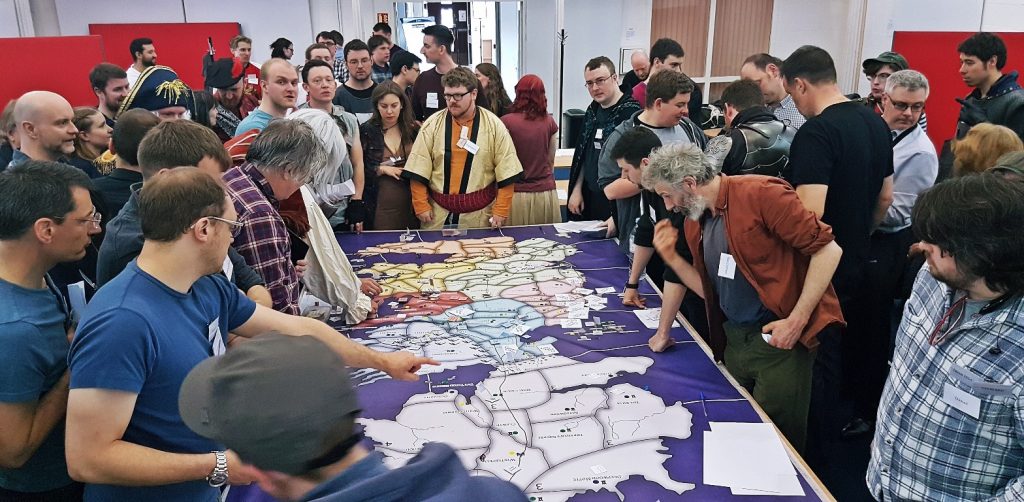
Thoughts
The new bannermen were all richly developed characters who I put just as much work into as the originals. I don’t think any of the players at the game could readily identify the new roles, pleasingly.
But realistically, Control were pretty stretched in the first run. ED is such a character driven game, that Region Controls weren’t just managing the mechanics of giving out taxes and raising troops, they were adding in the flavour and texture of the game. Each character had aspects of the history or character that Control could pick on, on top of the general regional struggles such as petitions from the smallfolk, failed harvest and groups of bandits.
Player feedback forms seem to support me in thinking that in the next run, I should reduce it to the original game size.
The Iron Throne
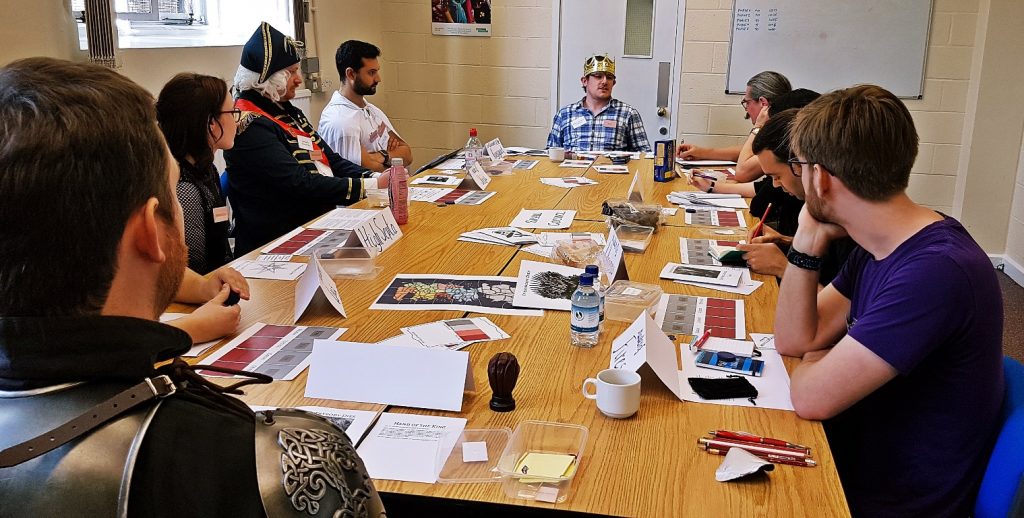
The intention in the first game had been to keep Aerys on the throne for pretty much the entire game. When he was deposed on turn 3 or 4, we were scrambling to keep up.
So for this game, we added in some extra rules regarding taking the Iron Throne. First was a handbook to be given to a new King player, detailing what they needed to do to keep the kingdom functioning. This included naming players to the Small Council, appointing an heir, and issuing royal commands.
But to become king in the first place, you needed 5 out of 7 Symbols of Legitimacy:
- Undisputed military control of King’s Landing
- Targaryen blood (the maesters can advise which families have this connection)
- The Crown of Aegon
- The personal blessing of the High Septa/Septon
- The presence of the Grand Maester – appointed by the Citadel – at your councils
- An oath of fealty from at least half of the Lords Paramount
- The adoration of the smallfolk (Small Council Control will adjudicate)
So sorry, Jaime Lannister, but you’re a long way short of being King. He had the personal blessing (or should I say “personal blessing wink”) of the High Septa, and control of King’s Landing, but I think that was about it.
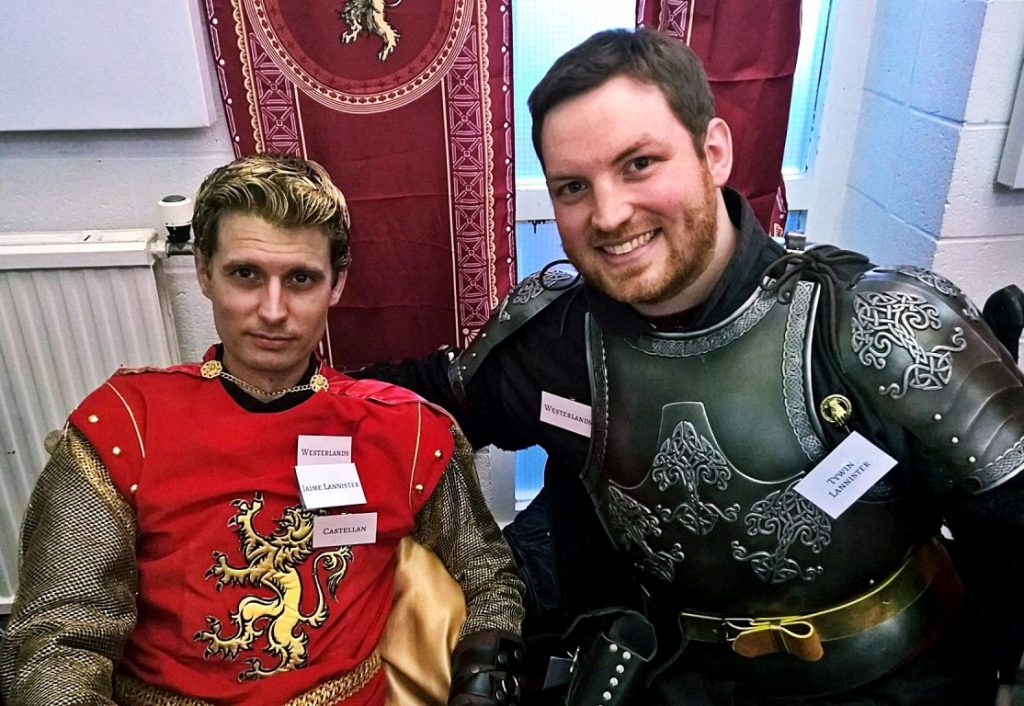
Thoughts
It was definitely a lot quicker and more efficient to put a new King in place than in the last game. Rhaegar took over the job swiftly, and started having council meetings, although any massive shift in game role is going to take time to get used to.
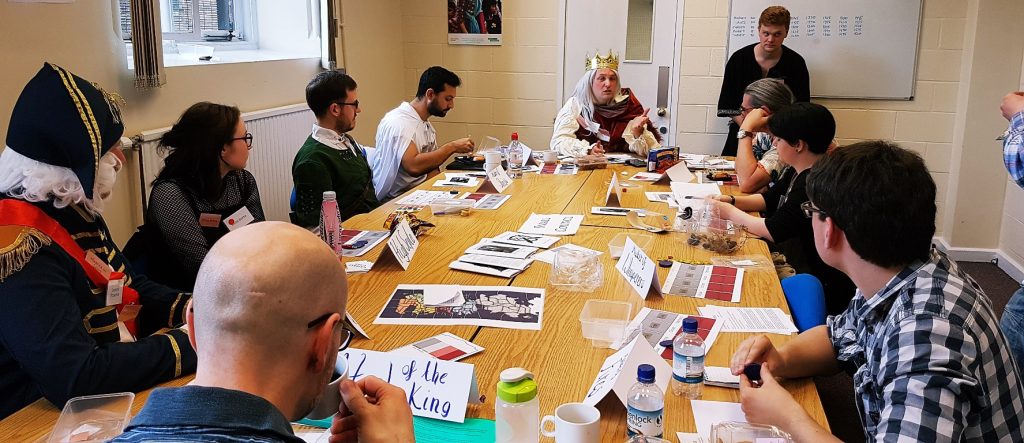
The small council looked surprisingly similar after Rhaegar became king
Dragonstone found they didn’t have much to do after Rhaegar took the throne, so I may have to do some thinking about their role in the game after that point. Perhaps the Crownlands don’t need quite so many bannermen total – four sworn to Aerys and three to Rhaegar at the start may just be too many.
And it felt a lot more realistic that a player couldn’t just decide to become king once they took control of the capital. If we’d played for a few more turns it would have been interesting to see what Jaime would have tried next.
Overall
There is NOTHING that compares to the feeling of standing up in front of a room of happy players. While there were improvements to be made, overall the results from the feedback forms were good.
The main area of improvement that I see is to increase player involvement, which I think can be done by reducing the number of bannermen.
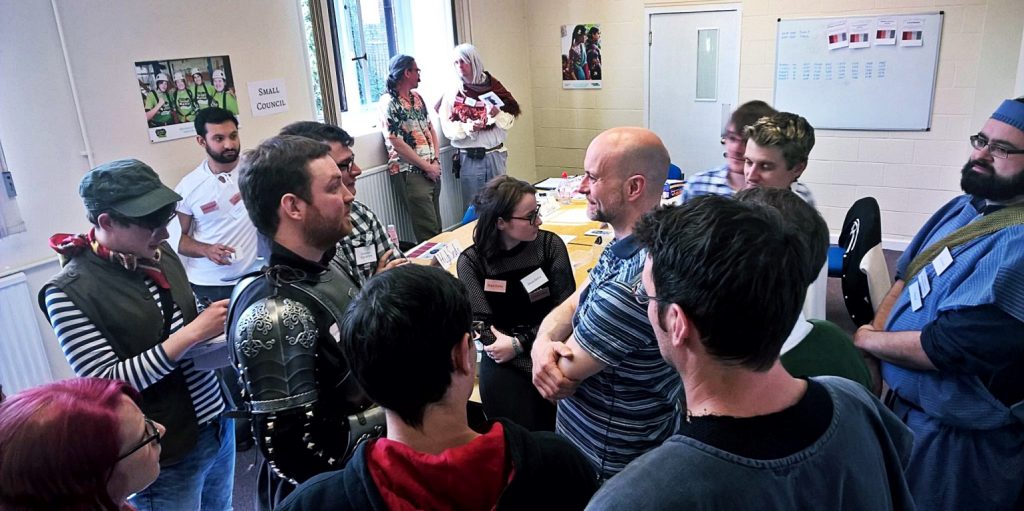
The Future of Everybody Dies
It’s a crazy popular game, and I think I could run it a couple more times but…
But I can now confirm that I won’t running Everybody Dies in its current format again.
However…
…
…
…
…
… stay tuned for Everybody Dies 3. It’s on its way, we already have the title, and it’s going to be AWESOME.
Check out the upcoming Pennine Megagames calendar here: I heartily recommend both Urban Nightmare: State of Chaos, and the Pirate Republic.
After Action Reports
We’ve had tons of amazing write-ups by players and control alike, and I’m sure there’ll be a few more to add. If you’ve done a write-up not mentioned below, just drop me a message and I’ll add you on!
Randyll Tarly, Bannerman in the Reach and Hand of the King
Septon Harald, Faith player in Dragonstone
Oberyn Martell, Lord Paramount family in Dorne
Duncan Lannister, Bannerman in the Westerlands
Quentyn Qorgyle, Bannerman in Dorne
Dareo Dalt, Bannerman in Dorne
Yohn Royce, Bannerman in the Vale
Hoster/Edmure Tully, Lord Paramount in the Riverlands
Maester Gormon, maester in Dragonstone
Symond Staunton, Master of Laws/Master of Fires on the Small Council
